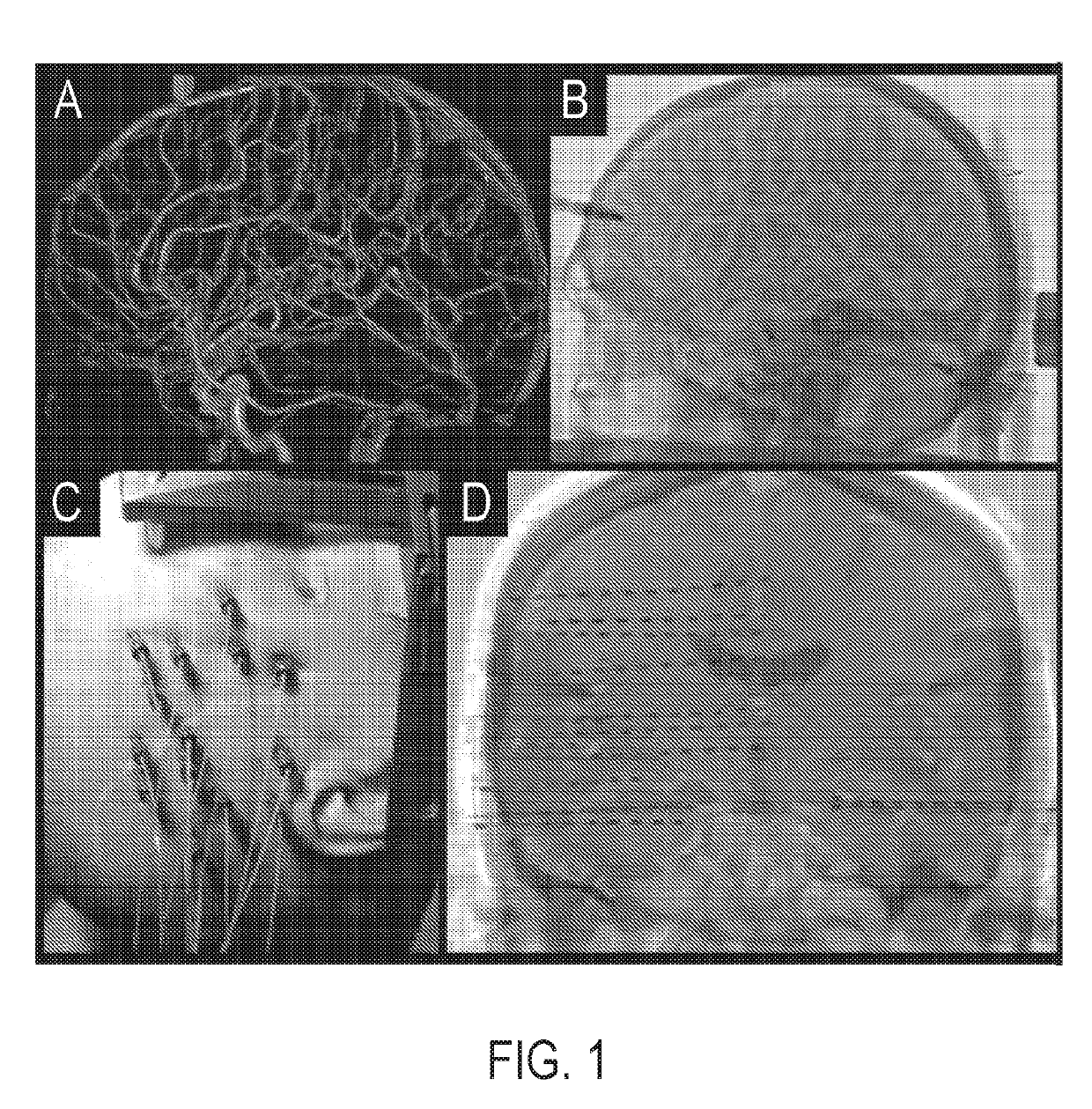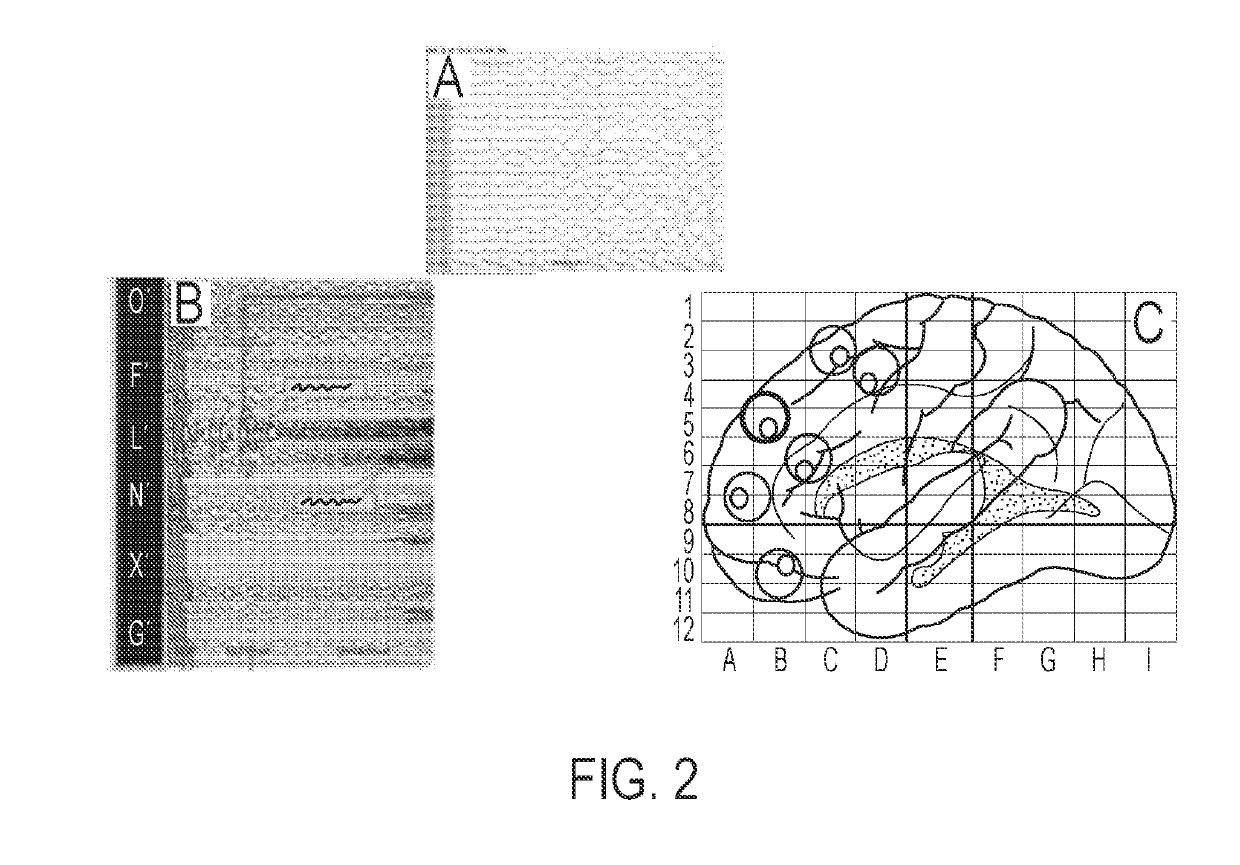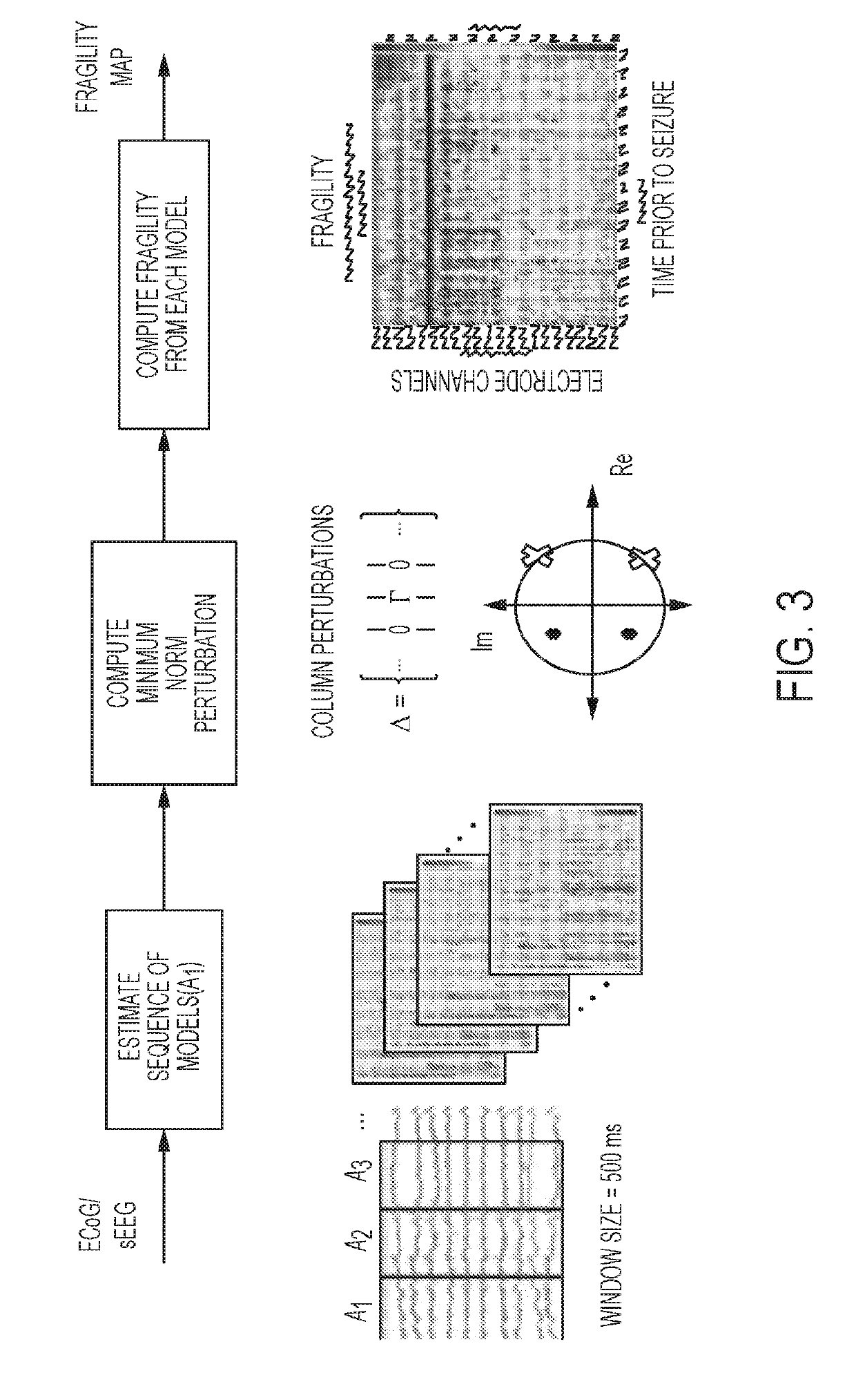Identifying the epileptogenic zone from nonseizure recordings using network fragility theory
a network fragility and epileptic zone technology, applied in the field of identifying the epileptic zone of a subjects brain, can solve the problems of inability to obtain education, gainful employment, driving privileges, and inability to obtain gainful employment, and achieve the effects of reducing the burden of mre, and reducing the number of patients
- Summary
- Abstract
- Description
- Claims
- Application Information
AI Technical Summary
Benefits of technology
Problems solved by technology
Method used
Image
Examples
examples
[0062]Currently, there are two surgical and potentially curative treatment options for focal MRE: (i) surgical removal of the EZ (oldest, most common and well-established treatment), and (ii) electrical stimulation of the EZ [80].
[0063]Despite the fact that successful treatment is life changing, surgical treatment utilization is minimal (only 2%) because the clinical workflow to localize the EZ can be interpreted by referring physicians and patients as excessive, invasive, long, complex, expensive and fraught with problems: (i) there is low efficiency in EZ localization, (ii) the patient endures a prolonged hospital stay, risking infection and neurological comorbidities as the clinician waits for several seizure events to accrue sufficient data, (iii) specialized clinicians manually inspect individual EEG “channels” to localize the EZ. Since it is extremely difficult to interpret recordings by eye, quantitative methods such as ours can help in localizing the EZ more efficiently, red...
PUM
 Login to View More
Login to View More Abstract
Description
Claims
Application Information
 Login to View More
Login to View More - R&D
- Intellectual Property
- Life Sciences
- Materials
- Tech Scout
- Unparalleled Data Quality
- Higher Quality Content
- 60% Fewer Hallucinations
Browse by: Latest US Patents, China's latest patents, Technical Efficacy Thesaurus, Application Domain, Technology Topic, Popular Technical Reports.
© 2025 PatSnap. All rights reserved.Legal|Privacy policy|Modern Slavery Act Transparency Statement|Sitemap|About US| Contact US: help@patsnap.com



